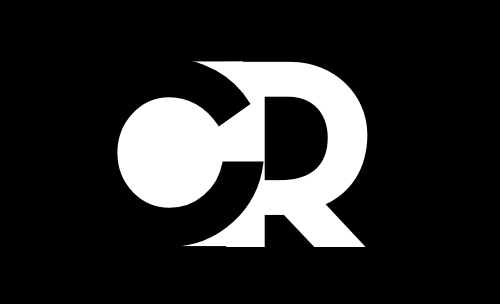How to get a business loan with no revenue but good credit?

Starting a business without revenue can be challenging, especially when you need funding. However, having good credit opens doors to financing options that might otherwise be unavailable. Lenders often rely on credit history to assess risk, so a strong score can compensate for the lack of income if you know where to look and how to present your case effectively.
This guide will walk you through the best ways to secure a business loan even without revenue. From leveraging personal credit to exploring alternative lenders, we’ll cover practical strategies to improve your approval chances. Whether you’re launching a startup or bridging a cash flow gap, the right approach can help you secure the funds you need.
Understanding Lender Requirements
Getting a business loan with no revenue but good credit is possible if you understand what lenders look for. Since your business isn’t generating income yet, banks and alternative lenders will focus on other factors to determine your eligibility. Here’s what they typically evaluate:
1. Personal Credit Score
Your personal credit score acts as a trust signal. A high score (usually 670 or above) shows lenders that you’ve managed debt responsibly in the past. Strong credit can compensate for the lack of business revenue, especially with traditional banks and SBA loans.
2. Business Plan & Viability
Lenders want assurance that your business can eventually repay the loan. A well-structured business plan should outline:
- Your product or service
- Target market and demand
- Revenue projections (even if current revenue is zero)
- A clear repayment strategy
3. Collateral or Personal Guarantee
Since there’s no revenue to back the loan, lenders may require collateral (like real estate, equipment, or inventory) or a personal guarantee. This reduces their risk if you default, they can claim the pledged assets.
4. Debt-to-Income (DTI) Ratio
Even without business income, lenders may review your personal DTI ratio (your monthly debt payments vs. income). A lower DTI (under 36%) improves approval odds.
5. Industry & Business Experience
Some industries are considered higher risk than others. If you have prior experience in your field, lenders may view your business as more likely to succeed, increasing your chances of approval.
Best Loan Options for Businesses with No Revenue
Since traditional lenders often rely on revenue to approve loans, securing financing without income requires exploring alternative options. Fortunately, if you have good credit, several loan types are still within reach. Here are the best funding solutions for businesses with no revenue:
1. Personal Loans for Business Use
If your business is new or pre-revenue, a personal loan can be a quick way to access funds. Since approval is based on your personal credit score and income (not business revenue), lenders may offer competitive rates if your credit is strong (680+).
Pros:
- Fast approval and funding (sometimes within days)
- No business revenue or collateral required in some cases
- Fixed monthly payments for easier budgeting
Cons:
- Personal liability (your assets are at risk if you default)
- Lower borrowing limits compared to business loans
Best for: Solo entrepreneurs, freelancers, or startups needing smaller amounts ($1,000–$50,000).
2. SBA Microloans & Startup Loans
The U.S. Small Business Administration (SBA) offers microloans (up to $50,000) and certain startup-friendly loans (like SBA 7(a) loans) that don’t always require revenue if you have strong credit and a solid business plan.
Pros:
- Lower interest rates than many alternative lenders
- Longer repayment terms (up to 6 years for microloans)
- Nonprofit lenders may offer mentorship alongside funding
Cons:
- Strict eligibility requirements
- Lengthy application process (weeks to months)
Best for: Early-stage businesses with a clear growth plan.
3. Business Credit Cards
A business credit card can act as a short-term financing tool, especially if you qualify for a 0% introductory APR offer. Since approval is primarily credit-based, strong personal credit can secure high limits.
Pros:
- No revenue verification in most cases
- Rewards, cash back, or travel perks
- Revolving credit for ongoing expenses
Cons:
- High interest rates after the intro period
- Personal credit may be impacted if misused
Best for: Managing cash flow, covering startup costs, or small recurring expenses.
4. Secured Business Loans (Collateral-Based)
If you have assets (like real estate, equipment, or savings), a secured loan can help bypass revenue requirements. Lenders are more willing to approve these loans since they’re backed by collateral.
Pros:
- Lower interest rates than unsecured loans
- Higher approval odds despite no revenue
- Possible larger loan amounts
Cons:
- Risk of losing collateral if you default
- Longer approval process for asset valuation
Best for: Businesses with valuable assets looking for lower-cost financing.
5. Peer-to-Peer (P2P) Lending
Platforms like Funding Circle or LendingClub connect borrowers with individual investors. Your creditworthiness—not revenue often determines eligibility.
Pros:
- Flexible terms compared to traditional banks
- Faster approval than SBA loans
- Competitive rates for strong credit borrowers
Cons:
- Fees can be higher than bank loans
- Not all investors fund pre-revenue businesses
Best for: Borrowers who want an alternative to traditional banks.
6. Invoice Financing (If You Have Pending Payments)
If your business has outstanding invoices (but no actual revenue yet), invoice financing lets you borrow against unpaid customer bills.
Pros:
- No revenue needed just unpaid invoices
- Quick access to cash (often within 24–48 hours)
Cons:
- High fees (factor rates instead of interest)
- Only works for B2B businesses with invoiced sales
Best for: Service-based businesses waiting on client payments.
Which Option Is Right for You?
The best loan depends on your credit, how much you need, and how quickly you can repay. If speed is crucial, a personal loan or business credit card may work. For lower rates, SBA loans or secured financing could be better.
How to Strengthen Your Application?

Getting approved for a business loan with no revenue hinges on making yourself as low-risk as possible to lenders. Since you can’t show income, you’ll need to compensate in other ways. Here’s how to build a strong application that boosts your approval odds:
1. Polish Your Personal Credit Score
Since lenders can’t assess your business’s revenue, your personal credit becomes the backbone of your application.
Actions to take:
- Check your credit report (AnnualCreditReport.com) for errors and dispute inaccuracies.
- Pay down existing debt to lower your credit utilization (aim for under 30%).
- Avoid new credit inquiries in the months before applying multiple hard pulls can hurt your score.
*Tip: A FICO score of 720+ unlocks the best rates and terms.*
2. Craft a Rock-Solid Business Plan
A lender needs to believe in your business’s future profitability even if you’re not making money yet.
Key sections to include:
- Market analysis – Prove demand for your product/service.
- Revenue projections – Realistic, data-backed forecasts (even if current revenue is $0).
- Repayment strategy – Show exactly how you’ll use the loan and generate income to pay it back.
Bonus: If you have letters of intent from potential clients or pre-orders, include them as proof of future revenue.
3. Offer Collateral or a Personal Guarantee
Since there’s no cash flow to secure the loan, putting up collateral (like real estate, equipment, or savings) or signing a personal guarantee reduces the lender’s risk.
What can be used as collateral?
- Real estate (home equity, commercial property)
- Vehicles or machinery
- Inventory or accounts receivable (if applicable)
- Cash savings (CDs or money market accounts)
Warning: If you default, the lender can seize these assets only pledge what you can afford to lose.
4. Show Alternative Proof of Financial Stability
If your business has no revenue, lenders may look at:
- Personal income (from a day job, investments, or rental properties)
- Business savings (even a small reserve shows financial responsibility)
- Strong industry experience (lenders trust borrowers who know their market)
Example: If you’re opening a restaurant and have 10 years of chef experience, highlight that expertise to build credibility.
5. Start Building Business Credit Early
Even without revenue, you can establish a credit profile for your business by:
- Opening a business credit card and paying it in full monthly.
- Getting a D-U-N-S number (for Dun & Bradstreet business credit reporting).
- Ensuring vendors and suppliers report payments to business credit bureaus.
Why it helps: A strong business credit score can eventually reduce reliance on personal credit.
6. Apply with a Co-Signer (If Necessary)
If your credit is good but not excellent (e.g., mid-600s), a co-signer with strong credit and income can significantly improve your chances.
Who makes a good co-signer?
- A business partner with solid credit
- A family member willing to take shared responsibility
- An investor with financial stability
Caution: Co-signers are equally liable for repayment make sure they understand the risk.
7. Choose the Right Lender
Some lenders are more startup-friendly than others:
- Credit unions often have flexible underwriting for members.
- Online lenders (like Kabbage or Bluevine) may focus more on credit than revenue.
- Community development financial institutions (CDFIs) support underserved entrepreneurs.
Pro Tip: Prequalify with multiple lenders to compare offers without hurting your credit.
Conclusion
Securing a business loan with no revenue may seem challenging, but strong credit opens doors to financing options that can fuel your venture. By understanding lender requirements, exploring alternative loan types, and strategically strengthening your application, you can position yourself as a trustworthy borrower even without current income. Whether through personal loans, SBA programs, or secured financing, the right approach can help you access the capital needed to launch or grow your business.
Remember, preparation is key. Polish your credit, craft a compelling business plan, and choose the right lender to maximize approval odds. With persistence and the right strategy, your good credit can bridge the gap between a great idea and a thriving business. Now, take the next step research lenders, gather your documents, and apply with confidence. Your business’s future starts today.






![Carx Street Guide [Tips for Beginners to Dominate Streets]](https://downloadcarxstreet.com/wp-content/uploads/2024/06/Carx-Street-Guide-Tips-for-Beginners-to-Dominate-Streets-768x480.webp)